Medical Research
Three-Dimensional Insights ,Exploring Stem Cells and Daam1 Gene in Intestinal Homeostasis

Deciphering Stem Cell Dynamics Unveiling the Role of Daam1 Gene in Intestinal Health
Stem cells, the unsung heroes orchestrating the intricate dance of cellular renewal in our bodies, hold the key to maintaining the health and vitality of our organs. In a groundbreaking exploration conducted by the IMBA – Institute of Molecular Biotechnology of the Austrian Academy of Sciences, a team led by Bon-Kyoung Koo has unraveled a fascinating chapter in the story of stem cells. This journey, published on November 24 in Science Advances, introduces us to a new character, the Daam1 gene, offering not only a deeper understanding of stem cell behavior but also opening new avenues in the realm of cancer research.

Our bodies, akin to well-maintained cars, require regular check-ups and repairs. In the realm of biology, tissue-resident adult stem cells step onto the stage to replace damaged or deceased cells, ensuring the seamless functioning of our organs. However, the pivotal question arises: How do these versatile stem cells discern the specific cell type they should transform into under diverse circumstances?
Gabriele Colozza, a postdoctoral researcher in the lab of Bon-Kyoung Koo, embarked on an exploration of this question by focusing on intestinal stem cells. The intestines, akin to a constant construction site, face various challenges, including mechanical wear and tear, exposure to digestive enzymes, and fluctuating pH values. Stem cells in the intestinal mucosa play a critical role in differentiating to form new intestinal cells, striking a delicate balance between renewal and differentiation. This equilibrium is finely tuned by signaling pathways and feedback loops that facilitate cell communication.

One such pivotal pathway in this cellular ballet is the Wnt pathway, renowned for its role in embryonic development. An overactive Wnt pathway can lead to uncontrolled cell division and, consequently, tumor formation. Rnf43, a well-known antagonist of Wnt signaling, acts as a guardian in this scenario. But the mechanism behind Rnf43’s role and the factors governing its regulation of Wnt signaling remained a mystery until the spotlight turned to Daam1.

Through meticulous biochemical assays, the researchers discovered that Daam1 is a molecular partner of Rnf43. In essence, Daam1 collaborates with Rnf43 to regulate Wnt signaling. This dynamic partnership ensures the movement of the Wnt receptor Frizzled into endosomes, leading to its eventual degradation and preventing excessive Wnt signaling.
To delve deeper into the impact of Rnf43 and Daam1 on the delicate balance of stem cell renewal and differentiation in the intestine, the researchers turned to intestinal organoids. These three-dimensional cell cultures, grown from adult intestinal stem cells, serve as a miniature representation of the intestinal mucosa.
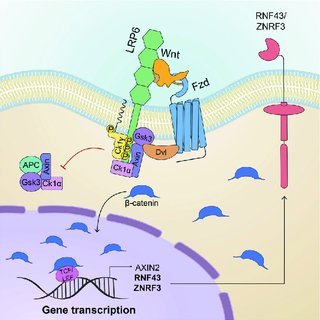
The results were enlightening—when Rnf43 or Daam1 was knocked out, the organoids exhibited a propensity to grow into tumor-like structures, emphasizing the crucial roles played by these genes. However, the narrative took an unexpected turn when the researchers observed mouse tissue. While the absence of Rnf43 led to the anticipated growth of tumors, the absence of Daam1 resulted in a surprising lack of tumor growth.
Upon closer inspection, it became evident that intestines lacking Rnf43 were filled with specific secretory cells known as Paneth cells, while those lacking Daam1 showed no extra Paneth cells. Paneth cells play a vital role by secreting growth factors like Wnt, which stimulate cell division. Daam1, it turns out, is indispensable for the efficient formation of Paneth cells. When active, Daam1 steers stem cells toward differentiation into Paneth cells; when inactive, they differentiate into alternative cell types.

This groundbreaking study represents the first genetic evidence showcasing Daam1, a member of the non-canonical Wnt pathway, as a crucial player in specifying Paneth cells and directly influencing the development of these vital secretory cells. Beyond the cellular intricacies, the results shed light on the intricate relationship between tumor cells and their microenvironment. Tumors, it seems, possess the ability to modify their surroundings to create a conducive environment for growth.
FOR MORE RESEARCHED ARTICLES Unveiling the role of Daam1 gene in intestinal stem cell fate decisions
In essence, the revelation of Daam1’s role in intestinal stem cell fate decisions not only deepens our comprehension of stem cell dynamics but also presents a promising avenue for innovative approaches in cancer research. As scientists continue to unravel the mysteries of our body’s cellular superheroes, the potential for groundbreaking discoveries and medical advancements remains vast.
Medical Sciences
Nanodrones Against Cancer,UNIST’s Innovation Marks a New Era in Treatment
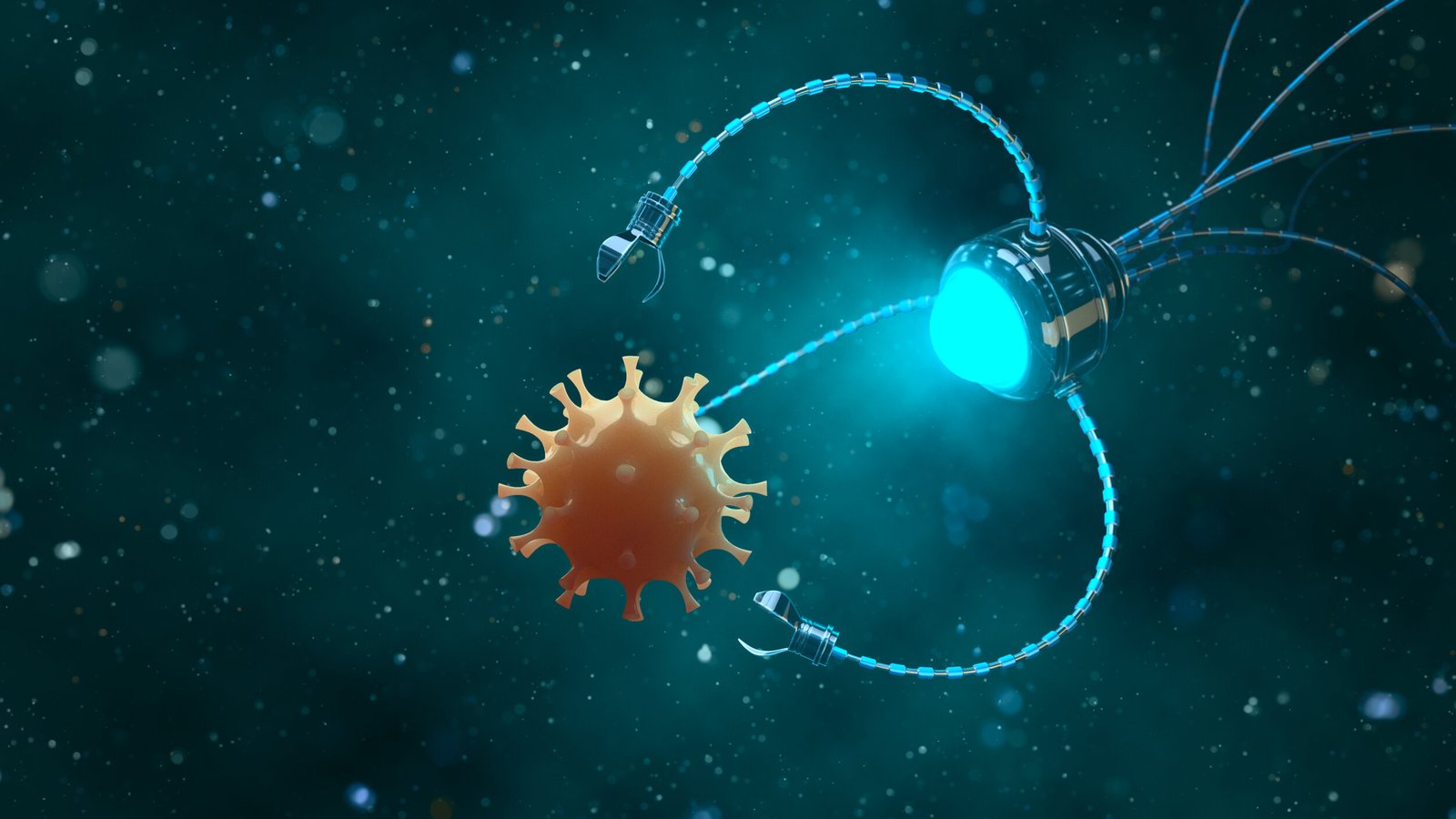
Game-Changer in Cancer Research: UNIST’s Nanodrones Take the Spotlight
In the realm of groundbreaking cancer treatment breakthroughs, the spotlight is now on the Ulsan National Institute of Science and Technology (UNIST), where a dynamic team of researchers has unveiled a potential game-changer. Imagine a world where tiny nanodrones, aptly named NK cell-engaging nanodrones (NKeNDs), take center stage in the fight against cancer.
RELATED ARTICLE New revolutionary nanodrones enable targeted cancer treatment
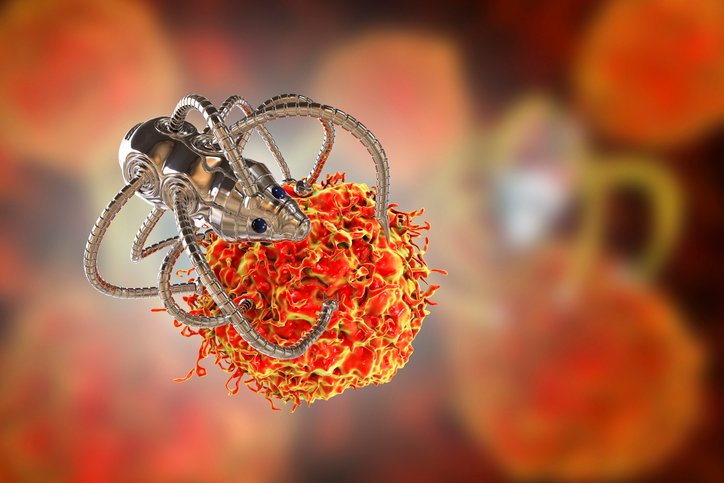
Led by the innovative minds of Professors Sebyung Kang and Sung Ho Park from the Department of Biological Sciences, this team has cracked the code to revolutionize cancer treatment. These nanodrones, far from the futuristic sci-fi portrayals, are engineered to specifically target and obliterate cancer cells, marking a significant leap forward in the battle against this relentless disease.

At the heart of this breakthrough lies the ability of these nanodrones to engage natural killer (NK) cells, the body’s frontline soldiers against cancer. What sets the NKeNDs apart is their precision – think of them as nanoscale guided missiles homing in on cancer cells with unparalleled accuracy. The secret sauce involves utilizing AaLS protein cage nanoparticles as the foundation for these nanodrones, incorporating specific cancer-targeting and NK cell-recruiting ligands, aptly named HER2 @NKeND and EGFR@NKeND.
Lab tests have showcased the remarkable ability of these nanodrones to selectively bind to various types of cancer cells while rallying NK cells to mount a defense against the invaders. The real breakthrough emerged during mice trials, where administering HER2 @NKeNDs alongside human immune cells resulted in a significant slowdown in tumor growth, all without adverse effects.

Professor Kang Se-byung, brimming with excitement, highlighted the potential for customizing treatments for different cancers using these NK cell delivery nanodrones. It’s not merely about targeting cancer cells; it’s about doing so with surgical precision, minimizing collateral damage and maximizing the impact of the body’s immune system.
MORE LATEST ARTICLE Brain Clot Revolution, Vortex Ultrasound Tornado in Brain Health
This groundbreaking study, published in Nano Today, marks a pivotal moment in scientific progress. With the support of various institutions dedicated to advancing knowledge, the door to a new era in cancer treatment swings wide open. Nanodrones may just be the superheroes we’ve been yearning for, offering hope and resilience in the face of one of humanity’s most formidable adversaries. As we raise a toast to science and innovation, the journey towards conquering cancer takes a remarkable leap forward. Cheers to the heroes of the microscopic world.
Medical Sciences
Revolutionizing Hypertension Treatment, Zilebesiran’s Promise in Cardiovascular Health

Zilebesiran’s Pioneering Role in Hypertension Care
In the dynamic realm of cardiovascular research in 2023, the American Heart Association (AHA) has spotlighted groundbreaking advances that promise to reshape the landscape of heart health. Researchers have delved into various dimensions, from innovative drug therapies to cutting-edge procedures, offering hope for improved prevention and treatment of cardiovascular diseases.
RELATED ARTICLE AHA names top advances in cardiovascular disease research for 2023

Brief Introduction about zilebesiran
A solitary administration of the experimental drug zilebesiran demonstrated both safety and efficacy in reducing systolic blood pressure in individuals with mild-to-moderate high blood pressure for a duration of up to six months. This information, disclosed in the Phase 2 segment of the KARDIA study, was presented as late-breaking scientific findings during the American Heart Association’s Scientific Sessions 2023. The conference, held from November 11 to 13 in Philadelphia, serves as a leading global platform for the exchange of cutting-edge scientific developments, research insights, and updates on evidence-based clinical practices in the field of cardiovascular science.
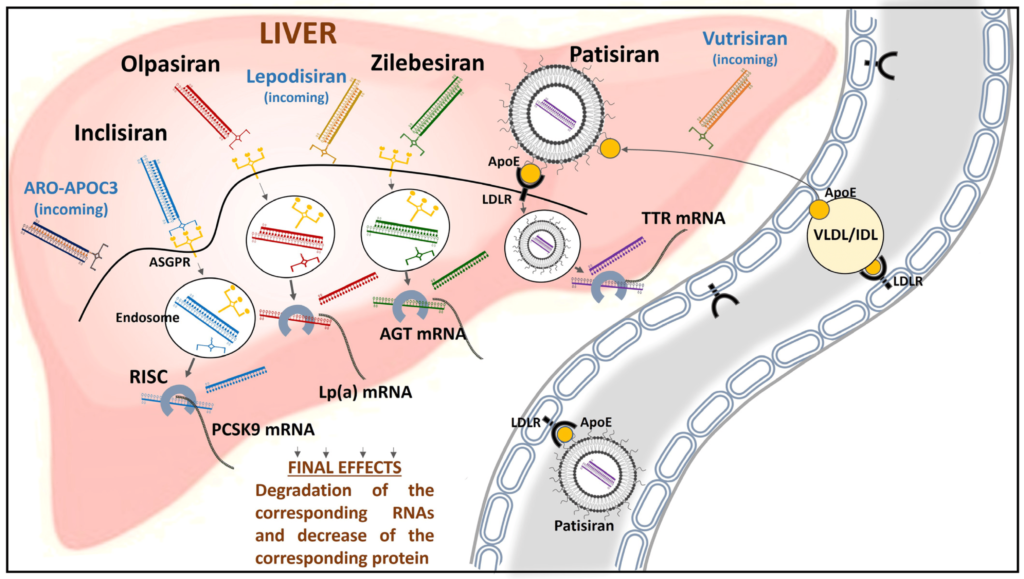
Zilebesiran functions as an investigational RNA interference agent designed to target angiotensinogen (AGT), a hormone primarily produced in the liver that plays a significant role in the regulation of blood pressure.
RELATED INFORMATION New drug zilebesiran effectively lowers blood pressure for six months, study finds
One notable stride involves a novel drug targeting hypertension. In this arena, Zilebesiran, an investigational drug, has emerged as a potential game-changer. In a phase I study involving 107 participants aged 65 and older with high blood pressure, the drug exhibited promise by reducing blood pressure measurements over an eight-week period. The study demonstrated efficacy, even with a single dose, offering potential advantages in terms of accessibility to care and adherence to long-term drug regimens. Moreover, the drug’s impact extended beyond hypertension, sparking excitement about its potential therapeutic applications for kidney and heart diseases.
Another significant breakthrough lies in the realm of stroke treatment. Endovascular thrombectomy, a minimally invasive procedure to remove blood clots causing strokes, has traditionally been applied to medium-sized strokes. However, new studies from various regions, including China, North America, Europe, Australia, and New Zealand, have presented compelling evidence that this procedure could benefit individuals with larger, more severe strokes. The trials, published in renowned journals such as the New England Journal of Medicine and The Lancet, underscored the procedure’s superiority in improving functional independence and reducing disabilities in severe stroke patients.

Advancements in imaging techniques have also taken center stage, particularly in guiding stent placement for individuals with complex coronary lesions. While angiography remains the standard for guiding stent placement, intravascular imaging, including techniques like optical coherence tomography (OCT), has showcased its potential. Studies such as ILUMIEN IV and OCTOBER compared OCT-guided percutaneous coronary intervention (PCI) to angiography-guided PCI, revealing that OCT guidance resulted in a larger minimum stent area, suggesting improved outcomes in complex cases.
The intersection of atrial fibrillation (AFib) and stroke treatment has seen intriguing developments. A study published in the New England Journal of Medicine challenges the conventional timeline for initiating anticoagulant treatment in AFib patients following a stroke. Contrary to current practice guidelines, early initiation of Direct-Acting Oral Anticoagulants (DOACs) within 48 hours of a minor or moderate stroke, and on day six or seven following a major stroke, demonstrated promising results. The study suggests that CT or MRI scans could offer more precise insights into stroke severity, aiding in identifying individuals who could benefit from earlier DOAC use.
Furthermore, the realm of cardiovascular health has expanded its reach to individuals without diabetes. Semaglutide, a medication primarily approved for long-term weight management in individuals with obesity, has exhibited potential cardiovascular benefits. Studies indicated that it not only lowered the risk of heart problems in people with diabetes but also showcased effectiveness in reducing heart failure-related symptoms and cardiovascular-related death in overweight and obese individuals without diabetes.
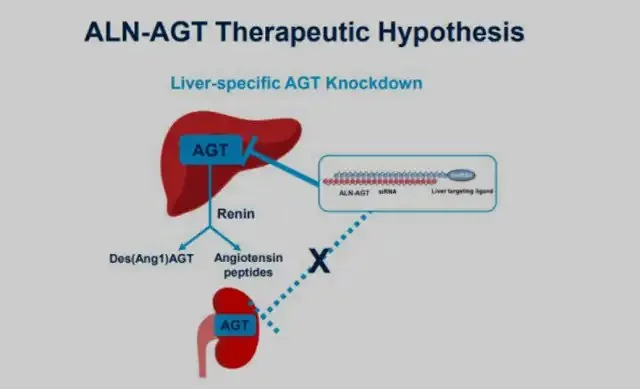
The AHA has also emphasized the role of social determinants of health in cardiovascular disparities. Research linking cardiovascular death rates to income status, access to healthy foods, and housing highlights the need to address these social factors for effective cardiovascular disease prevention and management.
On a broader scale, the AHA has taken a holistic approach with the introduction of the cardiovascular-kidney-metabolic (CKM) syndrome. This syndrome, encompassing the intricate interconnections between obesity, chronic kidney disease, diabetes, and cardiovascular disease, has prompted the development of a new risk calculator. The American Heart Association PREVENT risk calculator now estimates 10- and 30-year risks for heart attacks, strokes, and heart failure, incorporating measures of cardiovascular, kidney, and metabolic health, along with considerations for social determinants of health.
READ MORE SCIENTIFIC ARTICLE Brain Clot Revolution, Vortex Ultrasound Tornado in Brain Health
Lastly, the spotlight extends to the treatment of peripheral arterial disease (PAD), particularly chronic limb-threatening ischemia. Studies such as BASIL-2 and BEST-CLI have compared the effectiveness of surgical bypass to endovascular therapies, offering insights into optimal intervention choices for improved outcomes.
In essence, the cardiovascular research landscape of 2023 paints a vivid picture of innovation, ranging from novel drug therapies to sophisticated procedures and holistic risk assessment tools. As we navigate this evolving landscape, the promise of enhanced prevention, treatment, and overall cardiovascular health stands as a beacon of hope for individuals worldwide.
Medical Sciences
Decoding Waardenburg Syndrome,Genetic Aspects and Clinical Nuances of Waardenburg Syndrome

Understanding Waardenburg Syndrome: Genetic Aspects and Clinical Insights
Introduction
Waardenburg syndrome stands as a rare genetic disorder renowned for its distinctive features involving sensorineural hearing loss and pigmentary abnormalities affecting the hair, skin, and eyes. Named after the Dutch ophthalmologist Petrus Johannes Waardenburg, who first observed the correlation between deafness and heterochromia iridis, this syndrome has been a subject of keen medical interest.
RESOURCED ARTICLE Waardenburg syndrome

Demographics and Frequency: Waardenburg syndrome does not discriminate; it affects both males and females equally and can manifest across all races. With a population frequency of approximately 1 in 40,000, it contributes to 2–5% of all cases of congenital deafness.
Genetic Basis: This neurocristopathy arises from gene mutations affecting neural crest differentiation during embryonic development. Various genes play pivotal roles, and their mutations give rise to different types of Waardenburg syndrome. Noteworthy genes include:
- PAX3 (Chromosome 2q): Implicated in WS1 and WS3.
- MITF (Chromosome 3p): Associated with WS2A.
- Chromosomes 1p, 8p, 8q, 13q, 20q, and 22q: Linked to WS2B, WS2C, WS2D, WS4A, WS4B, and WS4C, respectively.
The mutations encompass various types such as insertions, deletions, frameshifts, splice alterations, missense, or nonsense mutations. Interestingly, most types of Waardenburg syndrome follow an autosomal dominant inheritance pattern, meaning that one affected gene passed on to a child is sufficient for them to exhibit the syndrome. However, complexities arise with genes like EDN3 or EDNRB, which generally follow autosomal recessive patterns.
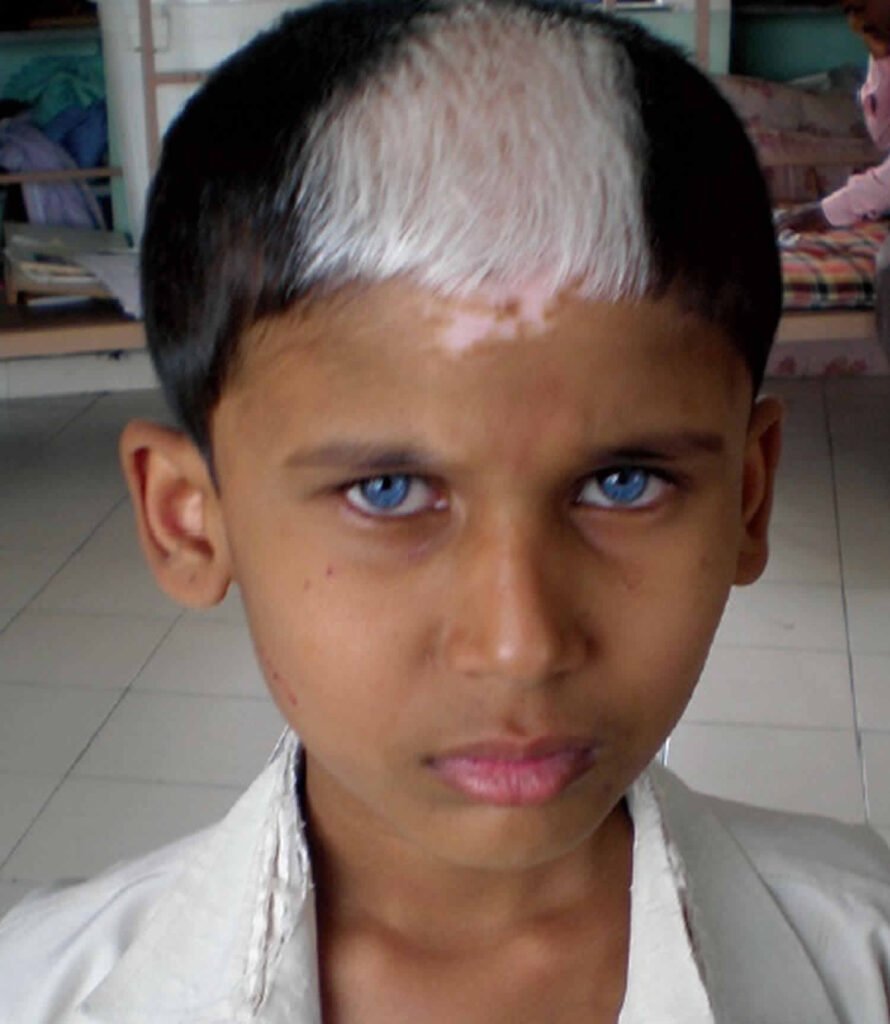
Clinical Features: Waardenburg syndrome manifests early in life, and its diagnosis can be challenging due to the subtlety of clinical signs. Major types (Type 1-4) display distinct features:
- Type 1: Most common, characterized by sensorineural deafness, distinct facial features, white skin patches, and pigmentary abnormalities in the eyes.
- Type 2: Similar to Type 1 but lacks abnormalities in the inner canthi.
- Type 3 (Klein-Waardenburg syndrome): Includes musculoskeletal abnormalities.
- Type 4 (Shah-Waardenburg syndrome): Similar to Type 2 but with the addition of Hirschsprung syndrome.
Diagnosis: The diagnosis of Waardenburg syndrome relies on clinical features, with major criteria encompassing sensorineural deafness, iris pigmentary abnormalities, and hair pigmentation anomalies. Minor criteria include features like unpigmented skin patches, synophrys, and premature greying of scalp hair. The W index, calculated based on canthal distances, aids in identifying dystopia canthorum. Genetic sequencing, particularly of the PAX3 gene, can provide a definitive diagnosis and guide genetic counseling.

Treatment and Management: As of now, there is no curative treatment for Waardenburg syndrome due to its genetic nature. Genetic counseling is crucial for affected individuals contemplating starting a family. Regular audiology examinations are recommended for managing deafness, and those with Hirschsprung syndrome may require surgery. Sun protection is emphasized for areas with unpigmented skin patches.
Outlook: Waardenburg syndrome presents stable clinical features throughout life, and individuals can expect a normal life expectancy. Although the syndrome poses challenges, advancements in genetic understanding have paved the way for improved diagnostics and counseling, offering individuals and families affected by Waardenburg syndrome a clearer path forward.
READ MORE INTERESTING ARTICLE Cortex Chronicles, Paul G. Allen’s Institute Explores the Study on Visual Masking in Bioscience
In conclusion, the intricate genetic landscape of Waardenburg syndrome underscores the importance of ongoing research and medical advancements in unraveling the complexities of this rare disorder. As we delve deeper into the genetic intricacies, our ability to diagnose, manage, and provide support for individuals with Waardenburg syndrome continues to evolve.
-
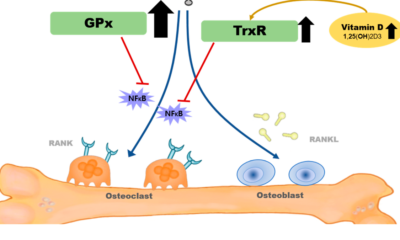
 Medical Sciences8 months ago
Medical Sciences8 months agoSelenium Nanoparticles Redefining Postmenopausal Osteoporosis Treatment with a Novel Approach
-

 Medical Sciences8 months ago
Medical Sciences8 months agoTransforming Heart Failure Care: Unveiling Abbott’s ARIES Trial Breakthrough with Aspirin-Free HeartMate 3
-
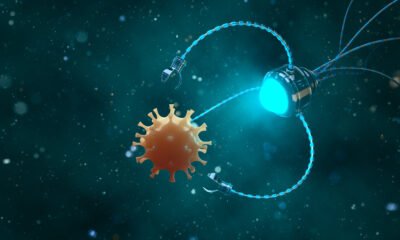
 Medical Sciences7 months ago
Medical Sciences7 months agoNanodrones Against Cancer,UNIST’s Innovation Marks a New Era in Treatment
-

 Medical Sciences8 months ago
Medical Sciences8 months agoGeriatric Care in the Face of Non-ST Elevated Myocardial Infarction and Acute Coronary Syndrome
-
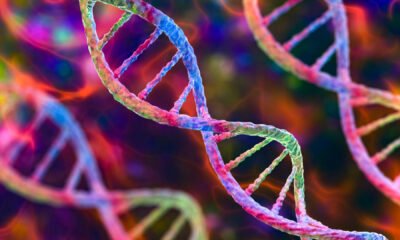
 Blog8 months ago
Blog8 months agoUK’s Milestone In Genetic Medicine,CRISPR Therapy Treating Sickle-Cell Disease and β-Thalassaemia
-

 Medical Research8 months ago
Medical Research8 months agoA New Chapter in Vision Restoration By Rebuilding Retinal Ganglion Cells
-

 Blog8 months ago
Blog8 months agoCutting-Edge Diagnostic Technology Handheld Device for Alzheimer’s and Parkinson’s Diseases
-

 Medical Sciences8 months ago
Medical Sciences8 months agoRegenerative Surgery A Comprehensive Innovation by Stem Cells in Face and Eye Transplantation
